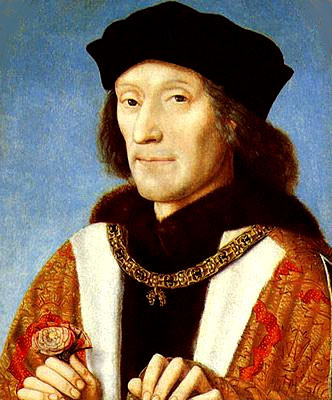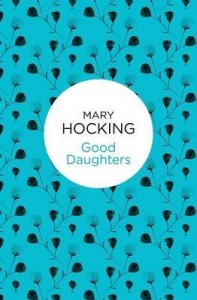
The 1965 club begins today, and I really had an embarrassment of riches to choose from: Emergency in the Pyrenees by Ann Bridge, Cork Street Next to the Hatters by Pamela Hansford Johnson, The Flight of the Falcon by Daphne Du Maurier, The Town in Bloom by Dodie Smith, The Mandelbaum Gate by Muriel Spark and The Young Spaniard by Mary Hocking. Two of those books; the Ann Bridge and the Pamela Hansford Johnson, are part of series that I don’t want to read out of order – so I sat down and contemplated the other four. I decided to start with the Mary Hocking.
Before I get to the novel – a word about Mary Hocking – especially for newer followers. I discovered her back in 2013 – and then in 2015 I managed to persuade Bello books – an imprint of Pan Macmillan to reissue all her books on ebook and print on demand. I have managed to collect all but one of her books (one I have only been able to read on kindle) in hardback and paperback editions, several of them signed.

It’s just over a year since I last read a Mary Hocking novel – which I am shocked at myself about. I have now read twenty-two of Mary Hocking’s twenty four novels – with just Daniel Come to Judgement and Ask no Question left. So, while I may not be banging on about Mary Hocking as much as a few years ago I haven’t forgotten about her. When people ask me about her writing I come up against the old problem – Mary Hocking is quite hard to pigeon hole – I’m not sure she is like anyone really. The jackets of a few Hocking novels liken her to Barbara Pym and Elizabeth Taylor – but that is very misleading – one or two of her novels would be enjoyed by readers of those writers – but she isn’t really like them except that she stands at some distance from her characters, casting a cool appraising eye. At least one of her novels felt rather Murdochian to me – and she was being published by Chatto and Windus during the same period as Iris Murdoch. One thing she does do – and which we can see in The Young Spaniard – her fourth published novel – is to explore the psychologies of her characters and their relationships.
Enough of the boring digression – I apologise – on with the novel.
The Young Spaniard is set in Barcelona – where a Scots lawyer James Kerr travels with some reluctance. James has decided to travel to Spain, fully intending to go to Seville – but he is obliged to stop in Barcelona first. An aunt he barely knows has asked James to look into the rumour that his cousin Rose – whom James has never met – has taken up with what she calls ‘a young Spaniard’. James is irritated by the task he has agreed to. Rose has been working for a travel agency – and James imagines she will be a fairly dull proposition to have dinner with before he catches a train to where he really wants to go.
On the train, James meets another young English woman – although they don’t get off to the best of starts – with each of them managing to irritate or misunderstand the other.
Once in Barcelona – James finally meets up with Rose – and she seems as silly and unimportant as he had imagined. However, there is more going on than James first realises. Rose’s boyfriend – Raoul is not so young after all – an enigmatic character, who is almost certainly not all he seems. Raoul seems to be both a haunted man and as it transpires a hunted man, it’s unclear at first what he has done to excite the interest of local police. Ex-civil war fighter Milo is never far away, watchful and mysterious himself – but how exactly does he fit in to the picture?
“It was sultry in Barcelona. The sky was the colour of steel above the leaves of the plane trees. The town sweated an odour compounded of drains, oil fat and garlic. In the bar at the new hotel in the Ramblas, Milo Pacheco ordered another drink and lit a cigarette. His hand trembled slightly and the blue eyes, narrowed over the flame, were vacant.”
Unwillingly James finds himself embroiled into the mystery of these two men – he finds himself staying in Barcelona – which is made a little more attractive as he finds himself more and more drawn to the young woman from the train. Frangcon, who is Rose’s friend; a schoolmistress on holiday.
Mysteries abound and gradually become more sinister – as Frangcon finds a passport hidden in Rose’s room – containing a photo of someone who looks a little like Raoul. James suffers very painfully at the hands of Milo’s police friends. Mary Hocking explores the relationships between her characters with some precision as the tension surrounding Raoul increases.
“There was a growing friction between them. They strolled across to the bench and sat beneath the plane tree, not speaking, watching as lights went on in the front rooms of the hotel. James remembered that only a few hours ago he had told himself that he could leave Barcelona with an easy conscience. He had not met Raoul then. The light from a street lamp slanted across the thin face of the man beside him and James noticed for the first time the faint white scar that ran from cheekbone to jaw. Was it the scar or the effect of the lamplight, yellow and unhealthy, that roused uneasy fancies, that made his face, neither young nor old, seem as though a blight had fallen on it, destroying youth while denying maturity?”
I enjoyed this early Hocking novel which has a good sense of place and slowly increasing sense of things not being quite right. It reminded me most of her first novel A Winter City.






 Interspersed with the story of Richard, is the story of Henry Tudor – who became Henry Vll – father to Henry Vlll. Henry was taken into the care of his uncle Jasper Tudor. He was of Welsh heritage, and his claim to the English throne was tenuous at best – coming through his mother – great-granddaughter of John of Gaunt. We meet him as a young boy, on a gruelling journey back to Wales, the men who have responsibility for conducting him to Pembroke Castle care little for him.
Interspersed with the story of Richard, is the story of Henry Tudor – who became Henry Vll – father to Henry Vlll. Henry was taken into the care of his uncle Jasper Tudor. He was of Welsh heritage, and his claim to the English throne was tenuous at best – coming through his mother – great-granddaughter of John of Gaunt. We meet him as a young boy, on a gruelling journey back to Wales, the men who have responsibility for conducting him to Pembroke Castle care little for him.







 Gabriel – the minister’s awkward son is friends with Anna Jory – they walk together while Gabriel tells her about the birds he sees. Gabriel; an unhappy young boy is not impressed with the stranger – his only welcome is to push him into the wall of the jetty, telling him sharply to leave. Gabriel Harkness will later watch jealously as Anna and the stranger begin to draw closer. Who is this man? Richard Oliver – at first he claims to be representing lawyers acting for Melita’s family.
Gabriel – the minister’s awkward son is friends with Anna Jory – they walk together while Gabriel tells her about the birds he sees. Gabriel; an unhappy young boy is not impressed with the stranger – his only welcome is to push him into the wall of the jetty, telling him sharply to leave. Gabriel Harkness will later watch jealously as Anna and the stranger begin to draw closer. Who is this man? Richard Oliver – at first he claims to be representing lawyers acting for Melita’s family.

 We do love our challenges don’t we – but it simply isn’t possible to join in everything. My #Woolfalong will continue all year of course with people dropping in and out as suits them. The first phase has a couple of weeks to go – and I have enjoyed it enormously. Lots of people using the hashtag and joining in the conversation on Twitter – long may it continue. I have a separate page on my blog with details of the schedule – and will post a short round up/discussion post toward the end of each two month period.
We do love our challenges don’t we – but it simply isn’t possible to join in everything. My #Woolfalong will continue all year of course with people dropping in and out as suits them. The first phase has a couple of weeks to go – and I have enjoyed it enormously. Lots of people using the hashtag and joining in the conversation on Twitter – long may it continue. I have a separate page on my blog with details of the schedule – and will post a short round up/discussion post toward the end of each two month period.







